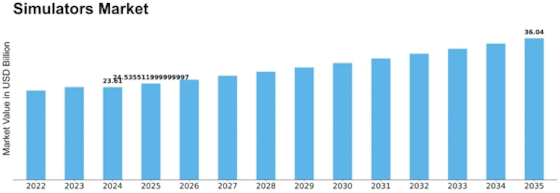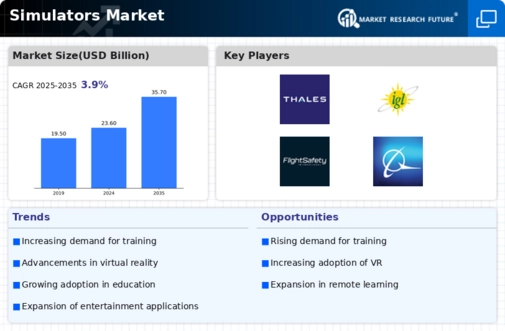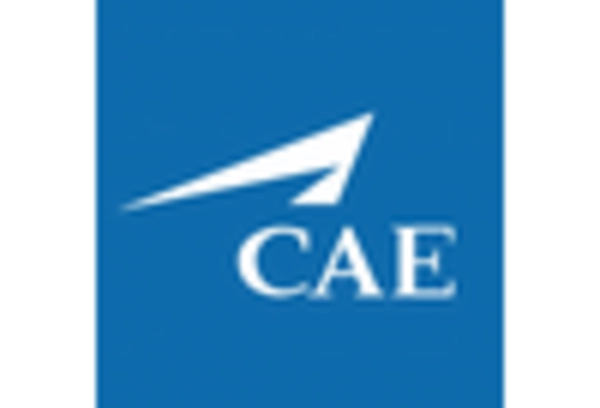Simulators Size
Simulators Market Growth Projections and Opportunities
Numerous market drivers impact the dynamics and evolution of simulation technology across varied sectors. The rise of training and skill development in aviation, military, healthcare, and automotive is crucial. Organizations see the benefits of training employees for real-world circumstances in a controlled setting, driving simulator demand. Simulation technology expenditures are motivated by the desire to increase workforce competence, operational preparation, and risk mitigation for complex and high-stakes tasks.
Advances in technology shape the Simulators Market. Hardware and software advancements make simulators more realistic and complex. Technology like high-fidelity visuals, VR, AR, and powerful physics engines make simulations more immersive and realistic. This technology-driven progress meets market demand for realistic simulation systems, increasing use across sectors.
Regulations and industry standards affect the Simulators Market, especially in aviation and military. For pilots and military personnel, the FAA and EASA require simulation training to assure proficiency and safety. Compliance with these restrictions creates demand for simulators that meet or surpass industry requirements, highlighting the role of legislation in market formation.
Simulation adoption across sectors is heavily influenced by the economy and budget. Investments in training and technology generally promote economic stability and development. Economic downturns may cause companies to rethink their expenditures, which might slow simulator acquisitions. Budget restrictions, especially in military and healthcare, impact simulator purchase volume and timing, altering market dynamics.
Global security concerns drive simulation technology demand, especially in military. Military personnel want improved training to improve preparation and strategic skills amid global pressures and security issues. Advanced military simulators are needed to replicate complicated warfare situations, mission rehearsals, and contingency training. Geopolitical issues including regional wars and shifting threats affect military budget and simulation technology adoption, shaping market dynamics.
The increased awareness of simulation-based training's safety and operational efficiency advantages influences the Simulators Market. Simulation technologies reduce accidents, improve decision-making, and boost performance in aviation and healthcare. As enterprises and regulatory authorities recognize these advantages, simulators are increasingly used in training programs, producing favorable market dynamics.
The Simulators Market is being affected by simulation technologies that address environmental and sustainability issues. As companies reduce their environmental effect, simulator makers are using eco-friendly production methods and energy-efficient components. Sustainability aspects like recyclable materials and energy reduction help the market respond to environmental concerns and integrate simulation technology with industrial requirements.
Simulation technology' growing usage beyond conventional industries also impact market considerations. Automotive, energy, and entertainment industries are realizing simulators' teaching, prototyping, and research potential. As simulation technologies are used in numerous operating settings, this diversity expands the market and gives simulator producers additional possibilities.
Demand for improved training and skill development, technological advancements, regulatory requirements, economic considerations, global security concerns, safety awareness, environmental sustainability, and the expanding applications of simulation technologies all affect the Simulators Market. Simulator producers must understand and react to these complex market variables to promote simulation technology adoption across sectors.


















Leave a Comment